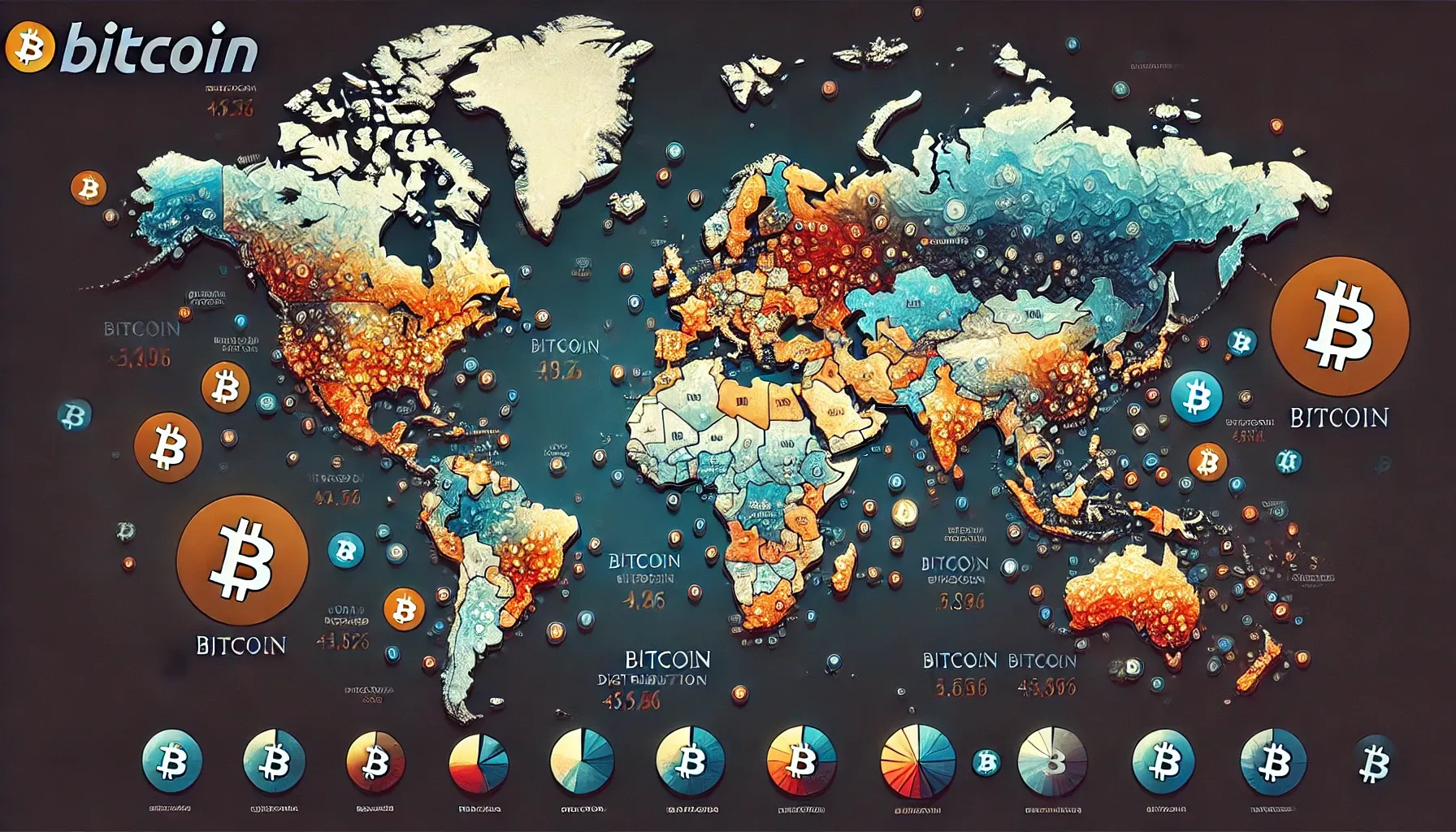The distribution of Bitcoin around the world is a topic of great interest, as it sheds light on the global adoption of the cryptocurrency, as well as the concentration of wealth among its holders. Over time, Bitcoin has evolved from a niche technology to a global financial asset, with millions of people and institutions engaging in its ecosystem. But what does Bitcoin distribution look like? How is it spread across countries, wallets, and individual wealth levels?In this article, we will explore key aspects of Bitcoin distribution: the global spread by country, the concentration of Bitcoin wealth, and how distribution has evolved over time. By understanding these patterns, we can gain deeper insights into Bitcoin’s potential future and its role in the global economy.
Bitcoin Distribution by Country
Bitcoin’s distribution by country provides a snapshot of its global reach and adoption. While Bitcoin is decentralized and operates on a peer-to-peer network, certain countries have emerged as leaders in Bitcoin ownership and usage. These countries are typically marked by high levels of cryptocurrency adoption, regulatory clarity, or economic instability that makes Bitcoin a preferred store of value.The distribution of Bitcoin is not uniform, with some countries holding a larger share of the total supply than others. This trend is influenced by factors such as:
- Economic stability: Countries with economic volatility (e.g., Argentina, Venezuela) often see higher Bitcoin adoption as people seek a safe haven from inflation.
- Regulatory environment: Nations like Switzerland and Singapore, with clear and supportive cryptocurrency regulations, are home to many Bitcoin investors and innovators.
- Technology and infrastructure: Countries with strong internet infrastructure, such as the United States, Canada, and European nations, naturally see more Bitcoin activity.
- Cultural attitudes towards investment: Some cultures are more inclined to embrace speculative investments, leading to higher rates of cryptocurrency adoption.
Overall, Bitcoin’s global distribution is highly concentrated in a few key regions, with North America, Europe, and Asia being the largest markets. However, emerging markets are gradually catching up as awareness and access to Bitcoin improve.Here are the top countries by Bitcoin ownership and usage:
- United States: Leading in Bitcoin mining and investment.
- China: Despite regulatory crackdowns, China remains a significant player in Bitcoin’s history.
- Germany: Known for a supportive regulatory framework and institutional interest in Bitcoin.
- Japan: One of the first countries to officially recognize Bitcoin as legal tender.
- Brazil: Seeing increased Bitcoin adoption as a hedge against inflation.
👉 Learn More about Bitcoin Distribution 👈
Bitcoin Wealth Distribution
Bitcoin’s wealth distribution is a striking feature of its ecosystem. Despite its decentralized nature, a significant proportion of the total Bitcoin supply is held by a small group of wealthy individuals or entities. This concentration of wealth is often referred to as the “Bitcoin whale” phenomenon.A major reason for this skewed distribution is the early adoption of Bitcoin. Many of the early miners and investors, who started accumulating Bitcoin in its early years when the price was less than $1, hold large quantities of the cryptocurrency today. Over time, these early adopters have retained their holdings, even as Bitcoin’s price surged to tens of thousands of dollars per coin.Key factors influencing Bitcoin wealth distribution:
- Early miners: Those who mined Bitcoin in its early days, before the difficulty increased and the price soared, were able to accumulate large amounts of the cryptocurrency.
- Institutional investors: Large organizations and hedge funds have entered the Bitcoin space, acquiring significant amounts of Bitcoin for investment purposes.
- Market volatility: Bitcoin’s price swings and speculative trading have created opportunities for wealth to be concentrated among those with the resources to capitalize on them.
- Security of holdings: Large holders of Bitcoin are more likely to keep their assets in long-term cold storage, resulting in less active circulation of their wealth.
Here’s an overview of Bitcoin wealth distribution:
- Top 0.1%: Control a substantial portion of the total Bitcoin supply, often in the form of “whale” wallets.
- Top 1%: Own a significant amount, benefiting from early adoption and large-scale investments.
- General public: The majority of Bitcoin holders are in the lower wealth tiers, with small amounts of Bitcoin often stored in exchanges or wallets.
👉 Explore Bitcoin Wealth Distribution 👈
Bitcoin Distribution Over Time
Bitcoin distribution has undergone several significant phases since its creation in 2009. Early on, Bitcoin was primarily used by technology enthusiasts, libertarians, and speculative investors. As its price grew and mainstream interest in cryptocurrencies surged, the distribution of Bitcoin became more complex, with institutional players entering the market.Key phases in Bitcoin’s distribution:
- Initial phase (2009-2011): Bitcoin was primarily mined by a small group of enthusiasts. The distribution was highly decentralized but concentrated among early miners.
- Growth phase (2012-2017): With increasing awareness and the rise of exchanges, Bitcoin ownership began to spread to a broader audience, though large holders (whales) still dominated.
- Mainstream adoption (2018-present): Bitcoin’s price rise led to an influx of institutional investors, and the ecosystem matured. More global regions started adopting Bitcoin, but wealth remained concentrated in a small number of wallets.
As Bitcoin becomes more widely adopted, the distribution is expected to become more evenly spread, though large holders will likely continue to dominate. The distribution by wallet size is one of the most critical factors in determining Bitcoin’s future role in the financial system.
👉 See Bitcoin Distribution Over Time 👈
Conclusion
Bitcoin distribution, whether by country, wealth, or over time, reveals interesting patterns about its adoption and usage. While countries like the U.S. and China lead in Bitcoin ownership, the wealth distribution remains highly concentrated, with early adopters and institutional investors holding the largest shares. As Bitcoin matures, however, its distribution will likely evolve, with more nations, individuals, and institutions participating in the ecosystem. Understanding these trends is crucial for predicting the future of Bitcoin as a global asset and its potential impact on the world economy.As noted by Bitcoin advocate Andreas Antonopoulos, “Bitcoin is not just a financial asset; it is a shift in the very idea of money and ownership.” The distribution of Bitcoin, both geographically and in terms of wealth, will play a significant role in how this shift unfolds.






